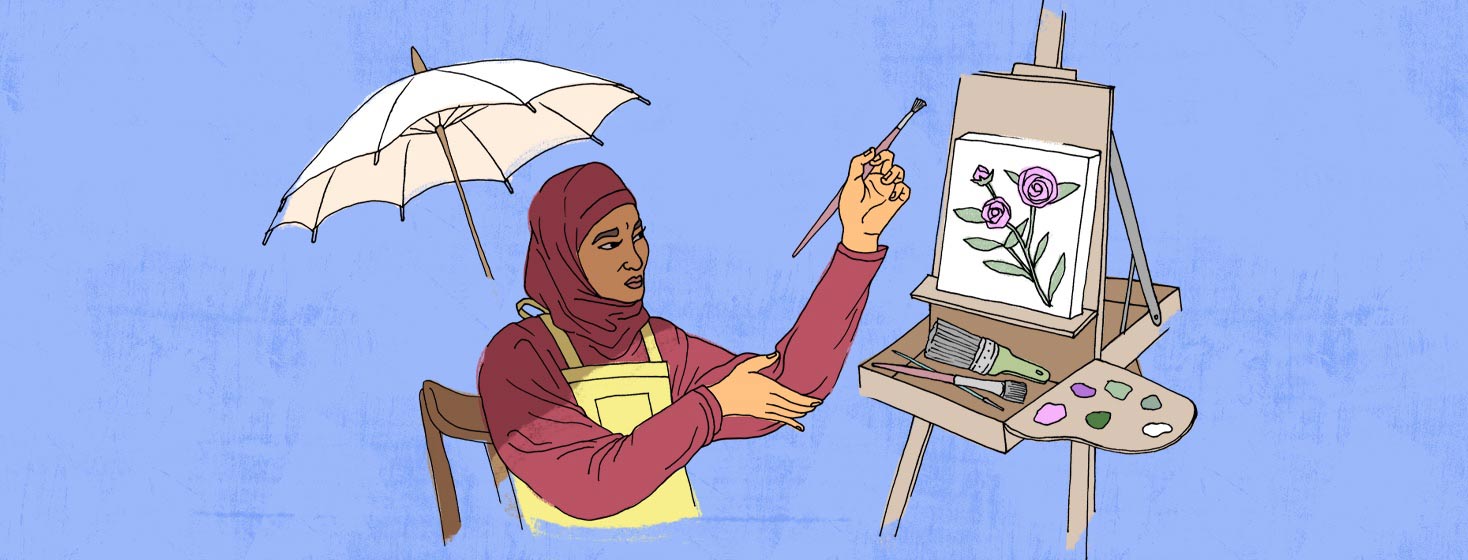Myasthenia Gravis Has Changed How I Approach My Art
I have been a painter since I was young and I have consistently been painting landscapes "en plein air," which is the term for painting outside.
Myasthenia gravis (MG) initially seemed like a daunting barrier to my style as an artist. But I have come around to welcome the limits MG has brought - they force me to develop my creativity further and push my art and uniqueness as an artist.
Shaky hands
My hands and arms fatigue rapidly as I typically stand up to paint and lift my arm to reach my canvas. I am also constantly bending over to search for paint tubes, put more paint on my palette, and clean my brushes.
After I was diagnosed with MG, a family member showed me a TED Talk by artist Phil Hansen, who has been a great inspiration for how I approach art with MG. Hansen acclimated to an uncontrollable tremor in his hand. Although he was forced to stray from pointillist drawings, a technique he had mastered, he has become more creative due to this hand limitation. He has expanded his possibilities in terms of art style and in choosing unconventional materials and painting surfaces.
Painting modifications
I get tired if I paint for too long, mainly if I choose to stand to paint on a hot day. It is also tougher on my body when I have been painting or doing some physical activity the previous days. Now I am not opposed to painting my viewpoint while sitting in a chair. It provides a striking view that not all see too often.
I have altered my style to be more abstract with fewer details, so I am not fighting my shaky hand to paint small scene components. I max my outdoor painting sessions to 3 hours to help avoid getting caught up in details. Details are no longer necessary when deciding how to dedicate the energy and strength MG gives me for an outdoor paint session.
I focus on what drew me to the subject I chose to capture. I put my effort toward that focal area, the colors, and light while painting on site. I always take a photo to reference if I choose to render areas of my painting in the studio.
I like how the simplicity of marks and color leaves the viewer of my painting with an interpretation of how that moment felt in person rather than if I spent hours realistically painting the scene exactly how a photograph could capture it.
Adding in breaks
The weakness I experience while painting starts turning into cramps and pain. A break or a few throughout a painting session is a good time to observe my art from afar. I can take a drink or have a bite of a snack for a little energy boost and to avoid dehydration which could trigger my MG symptoms. Even when not sitting to paint, I always bring a chair for breaks.
Innovative tools to create art
Easels with an attached or attachable palette help save strength by not having to hold the palette and avoid bending over to access paint. Less movement will result in a slower rate of weakening.
I use larger canvases and focus on small enough subject scenes that the details become manageable to paint.
Thin lines are something I struggle with in my landscapes since having MG. I have adapted by opting for a more expansive variety of tools that I can use to make delicate details. I used to have enough hand control pre-MG to make soft and straight lines using any style brush. Nowadays, I use palette knives and more paintbrush types, including round, good-quality brushes for details such as lines, q-tips to clean up my lines, and rulers.
Choosing the right paint
Not all paint mediums are forgiving. Oil, watercolor, and pastels require planning when painting outside on location. With oil, the paint can become muddy if too many colors mix and all those mediums make it challenging to correct the composition.
I use acrylic paint, which I find more lenient with MG when my hand shakes. When aiming to achieve a defined line or edge, I can paint right on top of whatever is below to help shape objects because acrylic paint dries in seconds. I can also rework the design of my painting multiple times within a couple of hours because the paint can fully cover the color below. Professional-level paint is more opaque, easing the process of hiding layers below.
Painting is a creative expression and should not create frustration and stress. Adapting an artistic approach and style to work with MG symptoms is crucial if an individual wants to produce art that keeps them wanting to return to their creative practice again.

Join the conversation